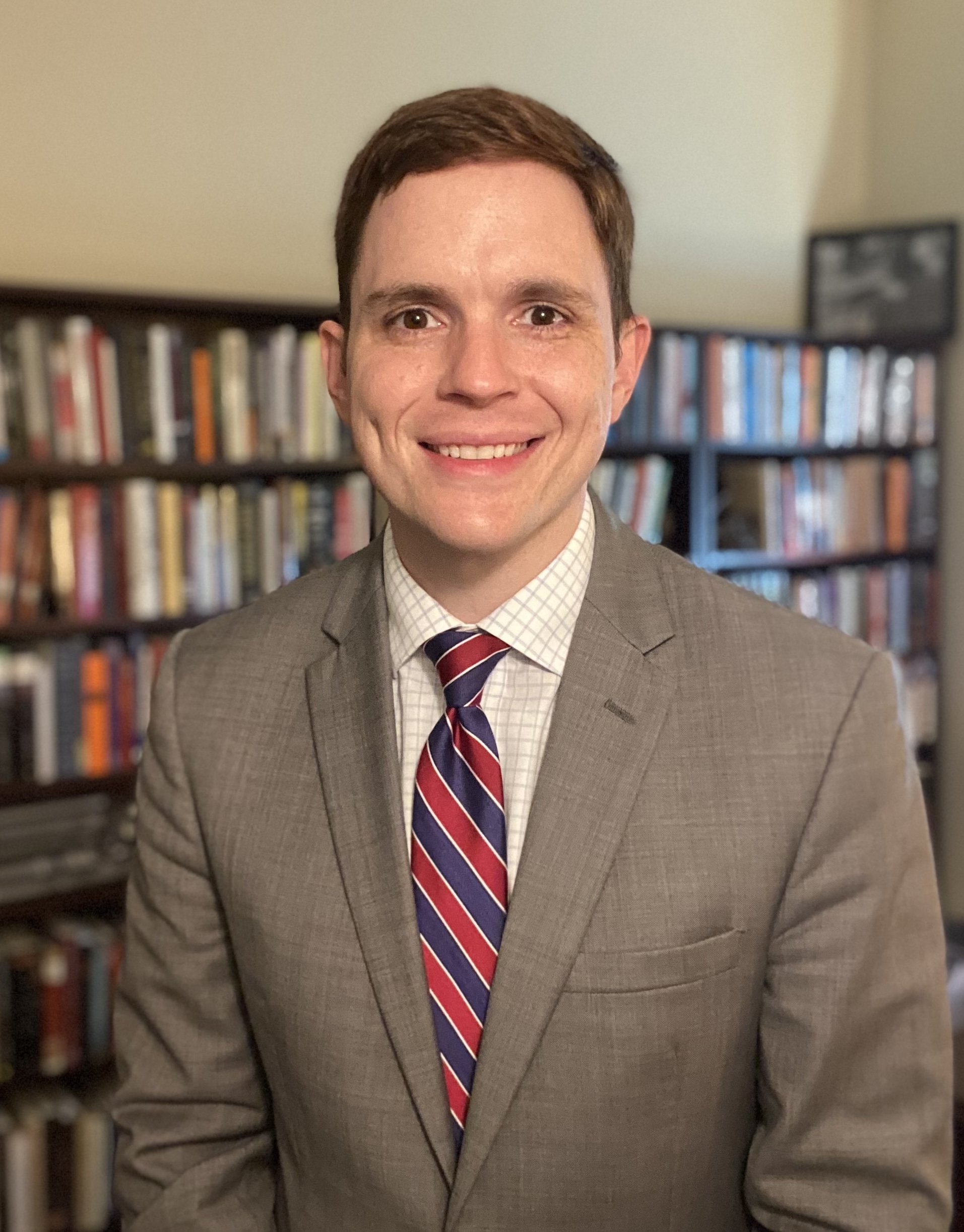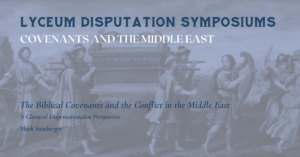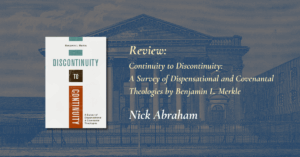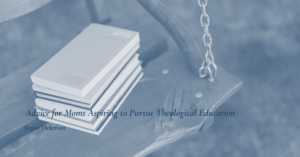Editor’s Note: This is part 2 in our Lyceum Disputation series considering Baptists, Religious Liberty, and the State. Stay tuned for further installments. As with all our work, the London Lyceum publishes a range of viewpoints to encourage thinking.
Confined to the wretched conditions of Newgate Prison, John Murton penned a small tract called, A Most Humble Supplication of the King’s Majesty’s Loyal Subjects in 1620. Murton, an English Baptist, found himself imprisoned because of his dissent to the establishment laws under King James I. Murton’s work advocated for full religious liberty and became a foundational text for later debates over soul freedom and religious establishment, especially the discourse between Rhode Island’s founder, Roger Williams and the famed Puritan preacher of Boston, John Cotton. Williams called Murton’s Humble Supplication the “arguments in milk.” According to the lore, Murton wrote this treatise on liberty of conscience with milk, making the parchment easy to smuggle out of prison because it would have appeared blank. Then, one of his compatriots took the document, holding it up to fire in order to reveal the text of Murton’s plea.
Williams drew upon that imagery in his description of Murton’s Supplication in Williams’s first extensive work on religious liberty, The Bloody Tenet of Persecution for Cause of Conscience, published in 1644. Milk, being the color white, denoted purity and innocence—it was a source of nourishment. These qualities, as Williams suggested, were paradigmatic of the entire edifice of soul liberty—liberty of conscience promoted a purer, more peaceful society.
In contrast to this “argument in milk” was another letter that Williams interacted with in his Bloody Tenet of Persecution; a letter of blood. This bloody letter was written by John Cotton, sometime in the 1630s, and Williams published it in its entirety in The Bloody Tenet of Persecution. In doing so, Williams juxtaposed the argument of milk alongside the argument of blood, and then spent the next several hundred pages rooting religious liberty in biblical, theological, and natural law categories.
Cotton’s letter was a point-by-point refutation of Murton’s Humble Supplication. As Cotton’s response indicated, the most important charge by Murton against religious establishment pertained to the issue of the human conscience. The Supplication levied a searing indictment of coerced religious orthodoxy because it breached the dictates and design of the human conscience. Murton labeled uniformity of religion as a “vileness” that struck men and women “only for cause of conscience.” This kind of political theology, Murton contended, violated the Bible and the “law of Christ.” Relying on Matthew 13:20—“Let the wheat and the tares grow together in the world, until the Harvest”—Murton enjoined King James to end violent policies directed at religious dissenters who were otherwise faithful citizens. These laws, furthermore, usurped God’s jurisdictional authority over the human conscience, attempting to coerce men and women into religious belief. Such laws only created religious hypocrites, not true converts. The former were an abomination to God while the latter only came about when consciences experienced the liberty and volition to assent to the gospel summons.
Baptists enjoyed a longstanding heritage regarding religious liberty. From the earliest days, Baptist preachers and theologians have contended for this soul freedom, rooted in core ecclesiological and soteriological commitments. From Murton and Williams in the seventeenth century to Backus and Leland in the eighteenth century, Baptists have made disestablishment of religion a pillar of its theological and historical tradition. Religious establishment, according to Baptists, attempts to force the conscience into right belief, which undermines the God-ordained means to set the captives free. Thomas Helwys, another early English Baptist who died for his beliefs in Newgate prison, wrote in his Mystery of Iniquity, “O, that the king would then see that he may not give his power to rule men’s consciences in the least things that are indifferent, much less has the king power to command men’s consciences in the greatest things between God and men.” Roger Williams, furthermore, argued that the policy of religious establishment unjustly bound men’s consciences and portended only two possible outcomes: a nation of hypocrites or “bloody wars, imprisonings, banishings, and putting to death for cause of conscience.”
For Williams and other Baptists in the seventeenth century like Helwys and Murton, the conscience functioned as the critical juncture of moral deliberation—it was the place where men and women, through their God-given freedom, either participated in or rejected God’s law and gospel. Williams called the conscience a “persuasion fixed in the mind and heart of a man, which forces him to judge and to do so and so with respect to God [and] his worship.” Thus, penal laws regarding worship and religious establishment curtailed the conscience’s volitional function, inhibiting it from assenting to the commands of the Bible and thereby frustrating the hope of salvation.
This concept of conscientious freedom has been dubbed the “glory of the Baptist heritage.” George Truett, an important Baptist figure in the early twentieth century gave an address on the steps of the US capitol in 1920, wherein he proclaimed, “It is the consistent and insistent contention of our Baptist people, always and everywhere, that religion must be forever voluntary and uncoerced.”
Historically, however, such claims failed to grapple with the responses and theological systems of men like John Cotton, who denied that established religion violated the precepts of conscience. Indeed, Cotton wrote at length that the political structure of the Massachusetts Bay Colony in no way infringed upon the human conscience. In other words, the accusation that religious establishment placed an unbiblical yoke on the conscience was unfounded.
Baptists shouldn’t shrug these claims off. On the contrary, charity as a virtue of proper historiography manifests when we attempt to fully understand the arguments and ideas from the historical subjects we study, especially of those with whom we disagree. In this case, grasping the full measure of what was at stake in the toleration debates of the seventeenth century requires a nuanced and full-orbed conceptualization of the various streams of thought that fed into these contests over establishment and disestablishment.
In short, it is anachronistic to frame the debate over religious liberty as one of the conscience’s persecutors against the conscience’s liberators. I’ve yet to encounter a single magisterial Protestant who believed that faith could be coerced into existence; I’ve yet to encounter a magisterial Protestant who thought the conscience belonged to the dictates of the state.
In fact, in the case of John Cotton, he took the charge that Massachusetts persecuted consciences seriously. In his defense of Massachusetts’s religious establishment, Cotton distinguished between the erroneous conscience and the conscience “rightly informed.” In the former case, persecution was unjust; in the latter case, however, the civil authority must enact punishment, but only after repeated attempts at persuading the individual of his error. Furthermore, Cotton’s assertions about the human conscience and the conscience’s relationship to the civil sate reflected a broader commitment about casuistry within the Puritan moral and theological tradition. In other words, Cotton’s distinction between a conscience in error and a conscience rightly informed, and how the magistrates ought to deal with consciences rightly informed, did not appear in a vacuum. The two most important theologians of casuistry within the Puritan tradition were William Perkins and William Ames. Their works on casuistry, published in 1596 and 1632, served as standard texts on the issue of conscience in Puritanism.
Published in 1596, William Perkins’s A Discourse of Conscience asserted a complex web of theological, moral, and natural law affirmations that did not view the freedom of a Christian’s conscience as mutually exclusive of established, indeed, coerced religion. In defining the conscience, Perkins argued that God endowed all humanity with a conscience, which he placed under the canopy of the understanding. The faculty of understanding comprehended truth and falsehood, good and evil—the conscience, as a constituent of the understanding, functioned like a judge that weighed the “goodness or badness of things or actions done.”
The individual conscience was not, by Perkins’s estimation, subject to the authority of the individual mind and heart. In fact, Perkins believed that the human conscience was “of a divine nature, and is a thing placed of God in the midst between him and man, as an arbitrator to give sentence and to pronounce either with man or against man unto God.” Thus, whether an action ought or ought not to be done, and the inward indictment men and women sensed when they knew they committed a wrong, all represented the conscience’s operative functions as it bore witness to the individual’s responsibility to God. Conscientious freedom was not, therefore, an individual freedom to do as one pleased but a freedom, granted by the gospel, to do as God pleased.
God, moreover, linked the conscience to himself and placed it under his authority alone: “Men are not fit commanders of conscience, because they are no lords of it, but God himself alone.” If, however, a law justly applied the law of God, that law bore a derivative authority in binding the conscience—an authority from God who, through the application of a law, promoted his creational order and thereby human flourishing. The integrity of a law hinged upon its adherence to the natural law, or, as Perkins described it, both tables of the ten commandments.
The fact that Perkins extended the canopy of the “natural law,” or “common law,” to cover both tables of the Decalogue was crucial in his contention that the civil magistrate had lawful authority to enforce an established religion. Laws pertaining to both the right worship of God and the right virtues necessary for society to function were indeed binding on the conscience.
The conscience, as Perkins argued, was not bound to the men who made the laws nor to the laws in and of themselves. Laws could not reach further than the outward man—it was impossible for any external actor to coerce, move, or alter the conscience. God himself constrained the conscience to laws that personified the ten commandments because they reflected his plan, purposes, and sovereign design. As Perkins wrote, if a law did in fact emanate from the law of God, then it was no longer a human law, but divine, and as such, could bind the conscience.
This fed Perkins’s justification for the role of the magistrate in matters of religion. His understanding of the conscience, its relation to God, and how civil laws fit into the broader framework of natural law all coalesced, by his estimation, into a workable formula that preserved the integrity of the Christian’s freedom and established religion. If laws “touching articles of faith” nourished worship of God and promoted human flourishing, then those laws exacted the derivative authority over the human conscience precisely because they mirrored the laws of God.
Failure to obey such laws meant that a man sinned, as Perkins argued, in two ways: “First because he breaks that which in conscience a law of God: secondly, because in disobeying his lawful magistrate, he disobeyed the general commandment of God, touching magistracie.” In other words, a dissenter, facing the retribution of the state, could not claim that he or she suffered persecution. The individual had sinned against his or her own conscience, thereby negating any claim for liberty; God set the boundaries for the conscience’s proper freedom. For Perkins, laws governing religion did not coerce the conscience, nor did they fail to adequately preserve the integrity of Christian liberty. When a law exhibited the image of God’s law, it nullified all claims to conscientious freedom—the conscience was, in fact, bound to that law.
This raised an important question: who determined whether a human law rightly manifested the law of God?
The Reformed, Calvinistic tradition wrestled with that question—and the puritan theologian William Ames followed in the footsteps of his teacher, William Perkins. Like Perkins, Ames believed that the conscience served as an inward judge. The conscience, therefore, was not directed by the caprice of individual desire but remained “immediately subject to God, and his will,” which meant that it could not “submit itself unto any creature without Idolatry.” Ames also clarified that because the conscience submitted to God and God alone, the only one who could punish the conscience was God. Again, the subjection of the conscience to God, and the assertion that God alone was its judge, remained a vital point for the magisterial tradition as it defended established orthodoxy.
Ames asserted an important distinction in his understanding of the conscience, namely, the natural and enlightened consciences. The difference between the two came down to special revelation. The natural conscience could discover natural laws without the aid of the Bible. The enlightened conscience, however, became enlightened when it was introduced to biblical precepts and scriptural commands. The distinction between the two became crucial, given that an individual sinned against his or her conscience when that person failed to submit to the inward testimony of his or her own conscience. Thus, when an ecclesial community “enlightened” an otherwise darkened conscience, that person now had the revelatory knowledge of God, and must, therefore, submit to that knowledge, given the conscience’s relationship with God. Despite the revelatory distinction between natural and enlightened consciences, Ames thought that the natural conscience possessed a capacious ability to ascertain sundry truths.
Ames connected this notion of conscience to the responsibilities incumbent upon civil authorities who, according to the ordinances of God, bore the solemn responsibility to enact and enforce righteous laws, reflective of God’s law. In this, Ames rejected the idea of adiphoria, or things indifferent. He argued that “whatsoever it is that of its own nature serves for order or comeliness, or edification, is not indifferent: for when they do participate in the nature of goodness, they are not in the middle betwixt good and bad.” He further contended that laws ought only to prescribe the good. Thus, all laws were either positive or negative—the former promoted virtue while the latter discouraged wickedness. All laws, therefore, must reflect the law of God. This undergirded Ames’s support for laws against heresy.
Indeed, in book four of Consciences & the Cases thereof, Ames outlined a definition of heresy that necessitated, in his mind, the need for the civil sword. Heresy contradicted Scripture in a way that eroded the “sum and substance of faith and manners,” and was held in a disposition marked by “stubbornness and obstinacy.” This provided the grounds for which Ames justified the magistrate’s role in what, according to dissenters, was a matter of conscience. Obstinacy arose after multiple failed attempts at presenting the person with the truth of the Bible. When a man, presented with his errors from Scripture, remained fixed in his theological error, the community could deem him obstinate and, subsequently, a heretic. The accused party had no grounds to acclaim freedom of conscience because his conscience did not properly belong to him. It belonged to God; and, at this point, the conscience was presented with the truth of God’s word, was enlightened, and summoned that person towards compliance with the truth.
Ames—with his understanding of conscience, civil laws, issues of adiphoria, and the contours of heresy—posed the following question: “Whether are Heretics to be punished by the civil Magistrate?” He answered that the church, first and foremost, must engage in spiritual warfare against all unorthodoxy, not relying upon the magistrate to deal with matters of theological deviance. Yet, the magistrate, must “repress wicked men that trouble the Church, even with the sword, or with public and external power if there be need.” Ames continued that a heretic who manifested public harm fell under the magistrate’s jurisdiction. The qualifier “public” was key; Cotton utilized similar reasoning in his political theology and in his defense of the Massachusetts Bay Colony. Magistrates in Massachusetts, Cotton argued, only acted against heretics when they aired their pernicious theology publicly and only after multiple attempts to draw them into repentance. If the efforts at turning a person away from their heretical beliefs failed—as they had in the case of Williams in 1635, the Antinomians in 1636, and Samuel Gorton in 1644—then the magistrates could, indeed, must intervene.
Again, under Ames’s paradigm, no neutral laws existed; either they reflected the will and justice of God or no. In the case of public heresy, the law of God clearly prescribed the proper course of action. Indeed, heresy presented a particular threat because, as Ames wrote, nothing less than, “the glory of God, and the safety of the Church,” were at stake.
Cotton’s understanding of conscience stood within the stream of the Perkins-Ames tradition. He especially imbibed their conception of the conscience’s relationship with the public square, and the justness of civil action against those who sinned against their own consciences. Indeed, Cotton, in his letter appended to The Bloody Tenet, wrote that while no earthly authority possessed jurisdiction over the conscience, thereby making the magistrate incapable of procuring “true Religion,” the state, nevertheless, must restrain blasphemy. Failure to do so tended to the seduction of others to “pernicious errors.” Cotton, moreover, granted that while unorthodox beliefs held privately enjoyed some measure of toleration, God required magistrates to take swift action once those beliefs were publicly expressed. For, “Liberty of conscience,” as Cotton defined it, “is to be granted to men that fear God indeed, as knowing they will not persist in Heresy, or turbulent Schism, when they are convinced in Conscience of the sinfulness thereof.”
The thought of Perkins, Ames, and how Cotton articulated the Puritan casuistry tradition, made the issues at stake in the establishment debates all the more complex, weighty, and deeply embedded within a pre-modern worldview. As such, this was far more than a dispute between the liberators of conscience and the conscience’s captors; on the contrary, this was a contest marked by competing webs of interconnected theological and moral assertions.
Baptists need to understand these complexities. Not only is this a prerequisite for a sound, indeed, Chrisitan historiography, but it ought to sharpen our own commitments to religious liberty. What Perkins, Ames, and Cotton outlined about the conscience rejected any accusation that religious establishment violated the order between the individual conscience and its Creator. Thus, their contention for magistrates serving as nursing fathers and mothers of the church was rooted much more in a conception about the public good, societal stability, and protecting what they saw as the good, the beautiful, and the true.
Baptists will obviously disagree with the conclusion regarding religious establishment. Indeed, historically Baptists like John Clarke in the seventeenth century and Isaac Backus in the eighteenth century, argued that religious establishment penalized otherwise godly and peaceable citizens of Massachusetts who refused to present their infants for baptism. Fines, imprisonment, whippings, and banishment, according to early Baptist figures, stifled the one thing that could lead to peace and stability, namely, free debate over the Bible and its commands. Roger Williams made this point, stating that when the “word of the Lord runs freely,” the gospel and the truth of God’s Word can be rightly discovered and obeyed. Religious establishment, enforced by the magistrate, inhibited the conscience’s assent to the truth because, at the end of the day, the threat of coercion or societal stigma still awaited anyone who dared to dissent.
While Baptists rightly disagree about the verity of religious establishment, these disagreements must be weighed up against the fullness of the magisterial Protestant contention about the conscience and the positive role envisioned between the church and the civil ruler. This raises important questions for Baptists trying to construct a biblical political theology that is informed by the distinctives of our tradition. To do so, as I have suggested, requires a clearer understanding of the conscience debates in the seventeenth century in order to better grasp the Baptist position and what was at stake in the toleration controversies in the early modern period.
Author
-

Cory D. Higdon (Ph.D., The Southern Baptist Theological Seminary) is an adjunct professor of history and humanities at Boyce College and the managing director of the Carl F.H. Henry Institute on Evangelical Engagement at the Southern Baptist Theological Seminary. His research focuses on the history of religious liberty in colonial America and has been featured in the Journal of Church and State, Journal of the Evangelical Theological Society, Public Discourse, and Providence Magazine. He has presented at numerous scholarly meetings including the American Society of Church History and the Evangelical Theological Society. He and his family reside in Louisville, KY.
View all posts




